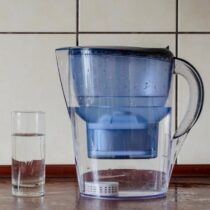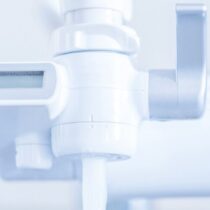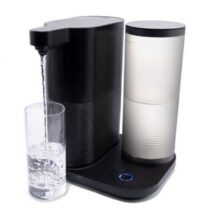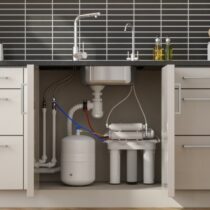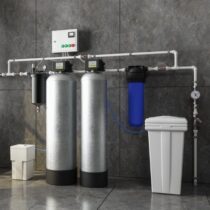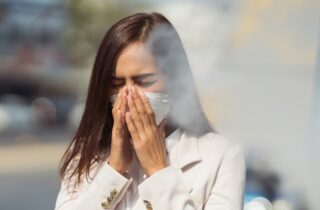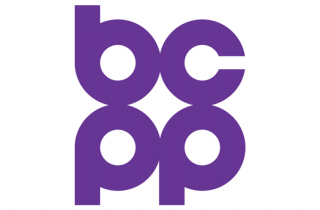Water Filter Guide
Use our easy, 3-step guide to learn what’s in your drinking water and select your own home water filter.
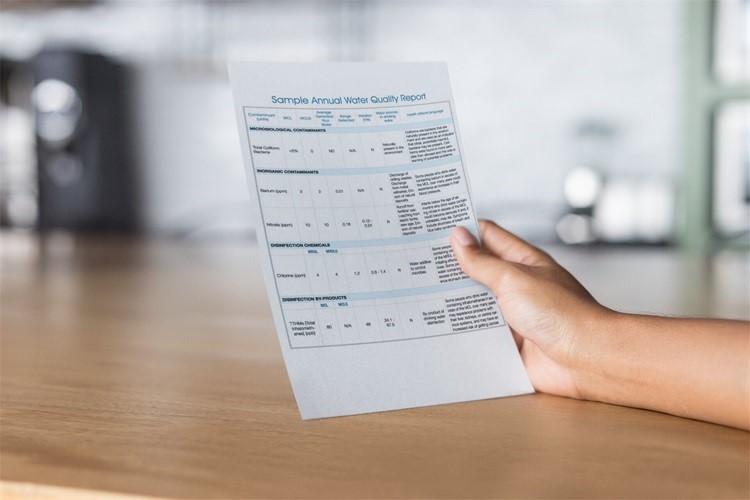
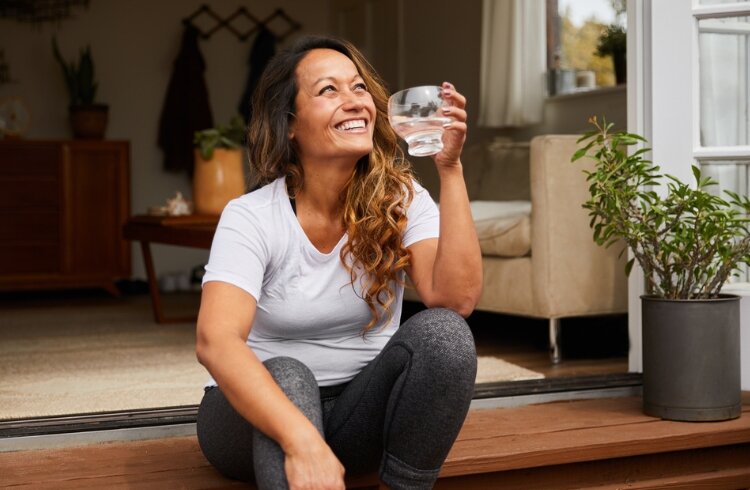
1. What’s in your drinking water?
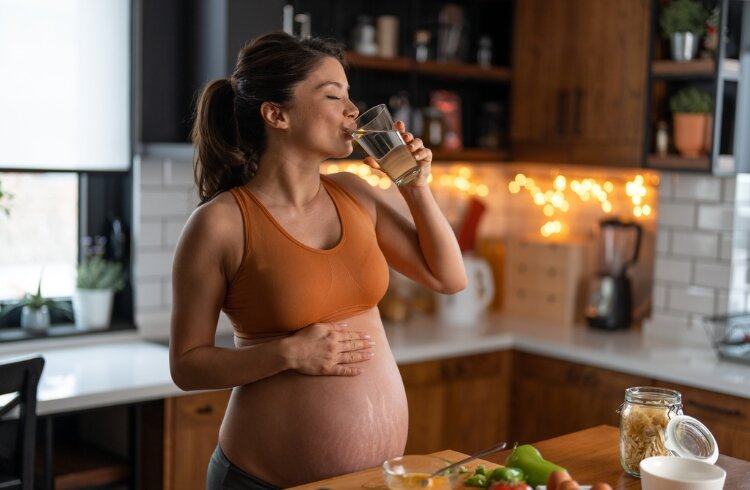
If you pay a water bill, review your Water Quality Report.
Did you know that the law requires your water utility to provide you with a Consumer Confidence Report or Water Quality Report? This report has information about where your water comes from and testing results for regulated contaminants.
Have a private well? Get your water tested.
If your water comes from a private well, it’s not regulated or tested by water utilities. We recommend getting your water tested by an accredited lab.
2. Choose a Water Filter
Using what you found in your water quality report, select the filter that works best for your needs.
Legend
Filter Types |
||||
What do you want to remove? |
Activated Carbon | Ion Exchange | Distillation | Reverse Osmosis |
| Taste, odor | ||||
| PFAS | ||||
| Volatile Organics (VOCs) | ||||
| Other Organics | ||||
| Disinfection Byproducts | ||||
| Heavy metals* | ||||
| Nitrate | ||||
| Bacteria | ||||
| Viruses | ||||
| Pros | Easy to use. Available at grocery stores. | Good for hard water. Available at hardware stores. | Filters many contaminants. Available at hardware stores. | Highly effective. Available at hardware stores. |
| Cons | Doesn’t filter all contaminants. | Ineffective for most contaminants. Adds sodium to water. Setup may be complex. | Removes trace minerals; water may taste flat. | May waste 3g water per 1g filtered. May require pro install. |
| Price Point | $-$$ | $$-$$$ | $$-$$$ | $$$$ |
| Setup Options | Pitcher, faucet, under sink | Countertop, whole house | Countertop, whole-house | Under sink, whole house |
Disclaimer: Filters can vary widely in effectiveness. Select a filter certified by the National Sanitation Foundation (NSF) or American National Standards Institute (ANSI) and follow manufacturer filter maintenance and replacement guidelines.
Notations:
*Some chemicals in this category are linked to breast cancer and/or endocrine activity
**Depends on filter pore size
Definitions:
- Heavy metals: May include arsenic, lead, and other heavy metals.
- PFAS: Also known as “Forever Chemicals,” PFAS (Per- and poly-fluoroalkyl substances) chemicals are a family of synthetic chemicals that build up in humans and are linked to numerous health problems including cancer.
- Other Organic Compounds: These may include harmful chemicals like pesticides, herbicides, and phthalates.
- Volatile Organic Compounds (VOCs): In addition to causing eye, nose, and throat irritation, headaches, loss of coordination, nausea, and organ damage, some VOCs are also carcinogens.
3. Choose a Setup
Now you’ve chosen what you want to filter, pick your setup!
| Setup Type | Matching Filter Type(s) | Key Features |
Pitchers |
|
Filters water as you pour the water into the reservoir. |
Faucet-mounted |
|
Attaches to your faucet. Easy to install. |
Direct connect, faucet integrated (built-in) |
|
Connects to your under-sink plumbing; no need to replace your faucet. |
Countertop |
|
Minimal setup. Uses power to push water out. |
Under-sink |
|
Adds a faucet for filtered water. Install filter plumbing under the sink. |
Whole house |
|
Large setup. Treats all water entering the house, so every faucet delivers filtered water. |
Remember: Choose a filter and setup that’s certified by the National Sanitation Foundation (NSF) or American National Standards Institute (ANSI). Replace the filter according to manufacturer instructions.
Happy hydrating!
Frequently Asked Questions

Your Title Goes Here
Your content goes here. Edit or remove this text inline or in the module Content settings. You can also style every aspect of this content in the module Design settings and even apply custom CSS to this text in the module Advanced settings.
Does boiling water reduce contaminants in tap water?
Boiling your water can effectively kill bacteria and viruses and reduce contaminants, such as disinfection byproducts and volatile organic compounds (VOCs). However, boiling water can concentrate contaminants such as lead, arsenic, and nitrate. Unless your water utility issues a boil notice, do not boil your water.
Can I be exposed to chemicals in tap water in ways other than drinking the water?
If your tap water contains volatile organic compounds (VOCs), these chemicals may vaporize into the air during a bath or shower. Consider opening a window, running the exhaust fan in your bathroom, or installing a whole-house filter that reduces VOCs.
Can I use ultraviolet (UV) disinfection to filter tap water?
Ultraviolet (UV) systems effectively kill bacteria and viruses, but they do not filter out other types of water contaminants.
What about bottled water?
- Unless your utility’s water quality report notes unsafe contamination or your water utility notifies you of a tap water issue, bottled water is unnecessary.
- Although it might seem cheaper to purchase bottled water than a water filter, in the long run, investment in a water filter is likely cost-effective.
- Unlike tap water, bottled water is unregulated by the U.S. Environmental Protection Agency (EPA) for environmental contaminants. In many cases, it’s simply tap water that has been bottled for convenience.
- Most plastic bottles are made of polyethylene terephthalate (PET), which can leach harmful contaminants into the water.
- Less than half of all plastic water bottles are recycled. Filling reusable stainless steel or glass bottles filled with filtered tap water is a healthier option for both you and the planet.
Resources:
Your Title Goes Here
Your content goes here. Edit or remove this text inline or in the module Content settings. You can also style every aspect of this content in the module Design settings and even apply custom CSS to this text in the module Advanced settings.
BCPP Tap Water Safety Resources
Water Safety Resources
U.S. national, state, and local resources for drinking water safety and treatment options.
Federal and State Water Agencies
Learn more about drinking water regulations, submit a complaint, or find resources.
U.S. Environmental Protection Agency
- Explore information about drinking water and regulation:
www.epa.gov/ground-water-and-drinking-water
- Safe Drinking Water Hotline:
1-800-426-4791
safewater@epa.gov
- Ask a question:
www.epa.gov/ground-water-and-drinking-water/forms/contact-us-about-ground-water-and-drinking-water
- Report a violation:
https://echo.epa.gov/report-environmental-violations
California State Water Resources Control Board
- Information about regulation of drinking water from public water systems:
www.waterboards.ca.gov/drinking_water/
1-916-341-5300
- Submit a water rights complaint:
www.calepa.ca.gov/enforcement/complaints/
Resources for In-home Water Treatment
If you are considering in-home treatment of your drinking water, be sure to use an approved device.
National Sanitation Foundation (NSF)
- Look up a filter to see if it is effective for specific contaminants:
https://info.nsf.org/certified/dwtu
- Learn about different filter standards:
www.nsf.org/knowledge-library/standards-water-treatment-systems
U.S. Environmental Protection Agency
Find detailed information about treatment processes for over 120 regulated and unregulated drinking water contaminants:
https://tdb.epa.gov/tdb/home
California State Water Resources Control Board
Find information about in-home treatment devices registered for sale in California:
www.waterboards.ca.gov/drinking_water/certLic/ device/watertreatmentdevices
Resources for Drinking Water Testing
If you want to have your water tested privately, use a laboratory that is certified by the State of California for drinking water testing.
California State Water Resources Control Board
Search the Geographic Information System (GIS) Map to find accredited laboratories near you:
www.waterboards.ca.gov/drinking_water/certlic/labs
Resources for Private Well Users
Private (domestic) well owners are responsible for ensuring their drinking water is safe. The government does not regulate private well water.
California State Water Resources Control Board
Guides, checklists and resources for domestic well owners:
www.waterboards.ca.gov/water_issues/programs/gama/well_owners
U.S. Environmental Protection Agency
Information for well owners on wells, groundwater, and how to protect your health:
www.epa.gov/privatewells
Water Education Foundation
Overview about testing private wells:
www.watereducation.org/post/private-wells
Wellcare
Provides free help for well owners:
www.wellcarehotline.org
1-888-395-1033
Clean Water Advocacy Organizations
Listed below are some local organizations working to improve drinking water quality. Contact them if you would like to advocate for the regulation of unregulated contaminants or learn more about local clean water resources or advocacy efforts.
Clean Water Action
Clean Water Action campaigns for cleaner and safer water, cleaner air, and protection from toxic pollution in our homes, neighborhoods and workplaces:
www.cleanwateraction.org/states/california
1-415-369-9160
cacwa@cleanwater.org
Community Water Center
Community Water Center acts as a catalyst for community-driven water solutions through organizing, education, and advocacy in California:
www.communitywatercenter.org
1-559-733-0219
info@communitywatercenter.org
Leadership Counsel for Justice and Accountability
Leadership Counsel advocates for funding to address the costs associated with drinking water and wastewater service, while also addressing the root causes of service inequality and deficiency:
www.leadershipcounsel.org
1-559-369-2790
Self-Help Enterprises
Assistance for rural communities to identify sources of clean drinking water and develop sanitary sewer systems:
www.selfhelpenterprises.org/programs/community-development/
1-559-651-1000
info@selfhelpenterprises.org
Last updated November 2023
Tap Water Study
A recent study on drinking water by our partners at the University of California Davis found chemicals of concern in both residential drinking water and bottled water. Results coming soon

References:
P.H. Gleick and H.S. Cooley. 2009. “Energy Implications of Bottled Water.” Environmental Research Letters, 4(1). Available at iopscience.iop.org/article/10.1088/1748-9326/4/1/014009.
Centers for Disease Control (CDC), 2023.A Guide to Drinking Water Treatment Technologies for Household Use. https://www.cdc.gov/healthywater/drinking/home-water-treatment/water-filters.html. Accessed November 2, 2023.
National Sanitation Foundation (NSF). Home Water Treatment: https://www.nsf.org/consumer-resources/articles/home-water-treatment. Accessed November 2, 2023.
Public Health Institute (PHI), 2023. Tap water Resource Packet.
Types: Article

